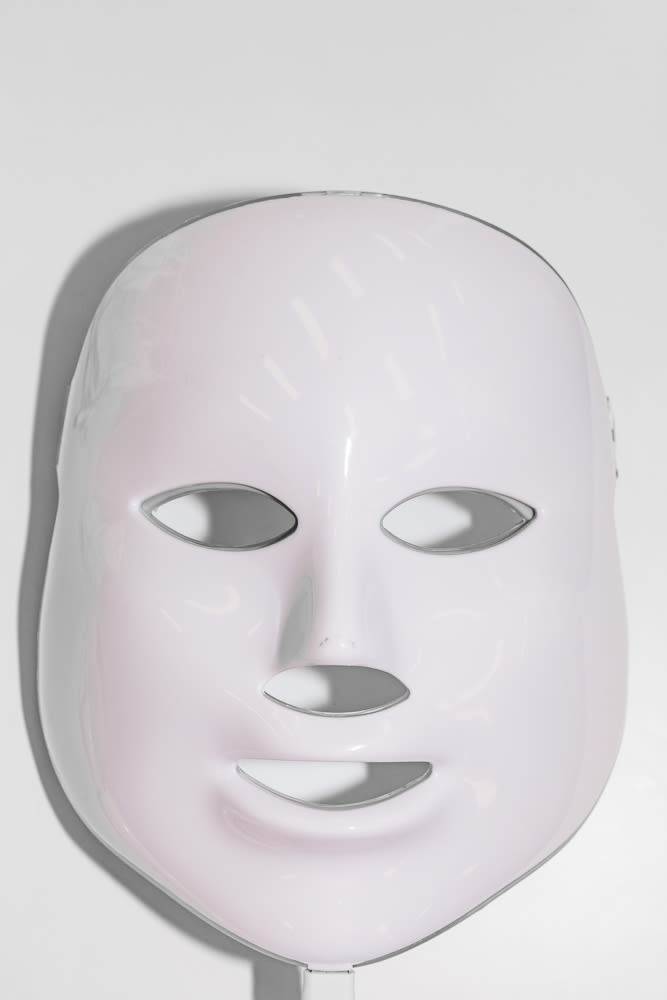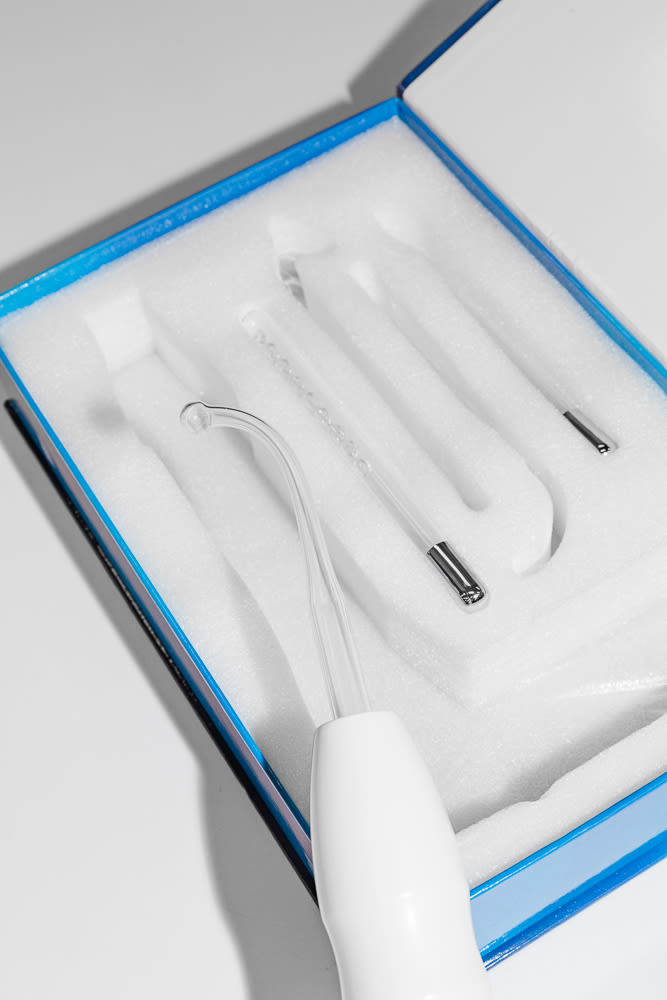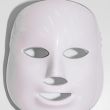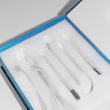For a person who writes about beauty, my own skincare routine is quite lean. Trim, even: the way I see it, the more product I use on my face, the higher the risk that something will irritate me/break me out/not play nicely with others. I don’t really mask. I don’t switch things up to keep my “skin on its toes.” In my mind, no product can ever beat out consistency with a routine. That’s really everything I have to say, thanks for reading, bye!
OK so there’s a twist: Look under my bed. Find a box? Great. Open it. Inside that box? More boxes. Inside those boxes? Gadgets. I have so many gadgets. Feel free to call me Inspector Gadget. (Go-go gadget clear skin?) If it plugs into a wall and I can find at least one medical research paper on it, I want in. It’s 2019—we can literally move to Mars, but still slather on creams and hope for the best? The technology for effective, non-invasive professional skincare is out there, and it’s more accessible than you think. Like, on Amazon and under $150 accessible. So now, if I may quote Beyoncé, let me upgrade you with the following three suggestions.
LED Light Mask
The mask that launched a thousand Instagram questions also has nearly 100 5-star reviews on Amazon. My college roommate had lovely skin, and swore by LED. Even after nights out, she would diligently hold a small blue light to places where she felt breakouts coming. And hey, it really works! But I am lazy. I don’t want to hold a tiny light up to my face for half an hour. Enter the LED mask. There’s the Ferrari equivalent that Jessica Alba likes so much—but also makes you wonder, ‘Should I buy this or pay rent?’ Or there’s the Amazon version, which has seven different colors that all have different skincare benefits. The main ones to work with are red and blue—red to promote collagen production, blue to kill acne-causing bacteria. Plus, look Ma, no hands! Strap it on your face and feel free to watch pageant queens compete for the heart of a former athlete, current virgin. When you’re all done, wipe down the plastic mask with alcohol to disinfect for next time, and follow with your normal routine.
High-Frequency Machine
This isn’t new technology—it was discovered by Nikola Tesla in the 1800s and has been used as a skincare treatment since the ‘70s. But it was new to me when I heard about it in Steph Shep’s Top Shelf. And I bought it, immediately. It’s $30! The instructions are completely whack, but here’s what you have to do: I use it as an alternative to a spot treatment, which my dry and PIH-prone skin could never really handle. High frequency current combined with ozone and neon gases kill acne-causing bacteria on the surface of the skin. So instead of drying the zit out, it works to shrink the infection, and by morning it’s basically gone. You can either use it with gauze or without gauze, depending on how sensitive your skin is, and you can grease up with moisturizer beforehand or follow with it. Basically, you can’t go wrong. Just make sure to put the electrode on skin before raising the power, or else you’ll feel a little zap like a rubber band. The whole process should take (max) 20 minutes.
Ultrasonic Scrubber
This last recommendation comes from Shamara Bondaroff of SB Skin, an aesthetician who knows her way around a professional gadget or two. The instructions say to use it on damp skin, but Shamara suggests putting on your cleanser and using the little vibrating spatula to take it off. As you move across your face, you may notice a grayish-brown liquid, which is the ultrasonic waves gently shaking out dead skin cells and sebum trapped in pores. It’s a gentle exfoliation for a deeper clean that’s less primitive than physical scrubs (read: won’t give you micro-tears), and also helps boost circulation the same way a jade roller does. Try working it into your cleansing routine once a week to start, and slowly working up to no more than every other day. For a double whammy, using it on the negative charge promotes iontophoresis and enhances product absorption—maybe. The jury’s still out on this one, but the product’s claims sound a lot like what this Georgia Louise Ion Enhancer does, for a fraction of a price.
—Ali Oshinsky
Photographed by Tom Newton.






